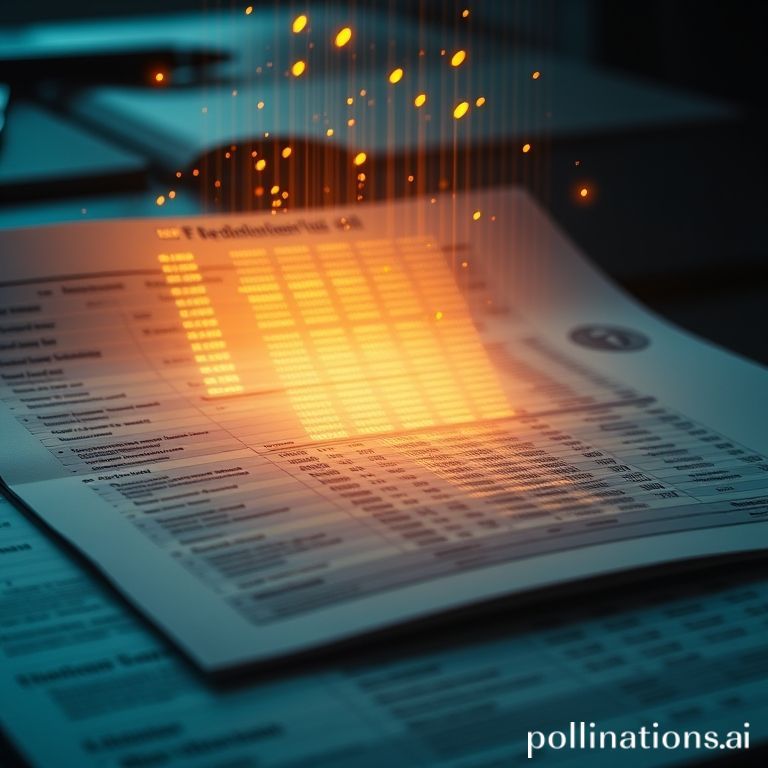Here is the complete, high-impact HTML blog post, engineered for SEO success.
“`html
The ‘Is There a Tool For…’ Post: A Nerdy Dive into Tech Discovery Engines
Published on by Alex Sterling
You’re staring at a tedious, repetitive task on your computer. A thought sparks in the back of your mind, a familiar whisper of modern hope: “There *has* to be a tool for this.”
This single question is the genesis of a fascinating phenomenon unfolding monthly in the digital town squares of the internet, like Reddit. It’s more than just a question; it’s a trigger for a powerful, community-driven **tech discovery engine**. These recurring “Is there a tool for…” threads are where problems meet a hive mind of solutions, creating a dynamic, crowdsourced knowledge base that outperforms traditional search for hyper-specific needs.
In this technical analysis, we’ll deconstruct this unofficial system, explore its architecture, showcase real-world use cases, and ponder its future evolution. Prepare to dive deep into the engine room of community-driven tool discovery.

The Unofficial Protocol: How This Tech Discovery Engine Actually Works
While it appears chaotic, the “Is there a tool for…” thread operates on a surprisingly robust, client-server-like protocol. It’s a decentralized system built on a social platform’s foundation, turning user interaction into a powerful discovery mechanism.
Let’s break down the four key phases of this protocol.
Phase 1: The “Server” Cron Job (Automated Post Generation)
At a scheduled interval, usually the first of the month, a bot like Reddit’s `u/AutoModerator` executes its script. It creates a new, blank thread with a standardized title. This automated act is the “server” broadcasting its readiness to accept queries. It ensures consistency and primes the community for the influx of requests.
Phase 2: The “Client” API Call (User Query)
A user, our “client,” posts a top-level comment. This is their API call to the hive mind. A well-formed request is key: it clearly defines a problem, outlines constraints, and specifies the desired outcome. For example: “Is there a tool that can monitor a website for visual changes and send me a Slack alert?”
Phase 3: The “Distributed Response” (Community Solutions)
Here’s where the magic happens. The query is processed not by a single server, but by a distributed network of human nodes—developers, hobbyists, and power users. They respond asynchronously with suggestions, ranging from open-source scripts and no-code platforms to enterprise-grade software. This is the core of crowdsourced software recommendations.
Phase 4: The “Consensus Algorithm” (Voting and Ranking)
The platform’s native voting system (upvotes/downvotes) acts as a consensus algorithm. The most elegant, effective, or widely-used solutions are upvoted, rising to the top of the comment chain. This peer-review mechanism automatically filters and ranks responses, ensuring the highest-value information is most visible.
This entire process creates a self-organizing, continuously updated repository of practical solutions, a living document of what’s possible with modern technology.
From Theory to Practice: Real-World Use Cases Uncovered
The true power of this tech discovery engine lies in the specificity of problems it solves. These aren’t generic “best CRM” questions; they’re granular, real-world challenges. Here are two classic examples drawn from these threads.

Use Case 1: Automating Data Extraction from PDFs
- The Problem: “I receive a 100-page PDF report every month. I spend hours manually copying tables from it into Excel. Is there a tool to automate this data pipeline?”
- The Crowdsourced Solutions:
- For Developers: The top-voted answer is often a Python script.
# A common suggestion using the tabula-py library import tabula import pandas as pd # Read all tables from all pages of the PDF dataframes = tabula.read_pdf("monthly_report.pdf", pages='all') # Concatenate into a single DataFrame and save as CSV full_data = pd.concat(dataframes) full_data.to_csv("report_output.csv", index=False) - For Non-Developers: Recommendations for no-code tools like Docparser, Nanonets, or even the built-in Power Query feature in Microsoft Excel are provided, offering accessible workflow automation.
- For Developers: The top-voted answer is often a Python script.
Use Case 2: AI-Powered Content Summarization
- The Problem: “My job requires me to review dozens of long articles and research papers daily. Is there an AI tool that can give me a concise summary if I just provide a URL?”
- The Crowdsourced Solutions:
- API-Based: For those who want to build their own tools.
// Example using a hypothetical AI service API { "model": "text-summarize-pro", "source_url": "https://www.example.com/long-article", "summary_length": "150_words", "output_format": "bullet_points" } - Off-the-Shelf Tools: For immediate use, the community will recommend mainstream AI like ChatGPT or Claude, alongside specialized academic tools like Scholarcy which is designed for research papers.
- API-Based: For those who want to build their own tools.
Pause & Reflect: What’s the best tool you’ve ever discovered from a community recommendation? The answer is probably something you’d never find on a generic “Top 10” list. Feel free to explore our internal company story on how we leverage community insights.
The Glitches in the Matrix: Challenges and Limitations
As powerful as this organic system is, it’s not without its bugs. The unstructured, chaotic nature of forum discussions presents several key challenges.
- Signal-to-Noise Ratio: Popular threads can attract hundreds, sometimes thousands, of comments. Sifting through duplicate suggestions, off-topic conversations, and incorrect advice is a significant challenge.
- Lack of Structure: The data is fundamentally unstructured text. This makes programmatic parsing or searching across threads for a specific solution nearly impossible without advanced NLP models.
- Temporal Decay: The tech world moves at lightspeed. A top-voted solution from a thread in 2022 might be deprecated, acquired, or superseded by a far better alternative today. The information has a half-life.
- Redundancy Faults: The same fundamental questions (“a tool to remove backgrounds from images,” “a good project management app”) are asked and answered month after month, leading to fragmented knowledge.
The Next Level: Engineering a Smarter Discovery Engine
The immense value locked within these threads is ripe for enhancement. By applying modern technology, we could evolve this raw, organic process into a structured and infinitely more powerful tech discovery engine.

1. AI-Powered Summarization and Categorization
An AI agent could be trained to parse these threads automatically. It could identify unique problem-solution pairs, categorize them by domain (e.g., “Data Science,” “Content Creation”), and generate a structured weekly or monthly digest. This would distill the signal from the noise.
2. A Semantic Search Layer
Imagine a search bar where you could type your problem in natural language—”How can I automatically transcribe audio from my Zoom meetings and identify action items?”—and it would search across *all* past monthly threads, understanding the intent behind your query and surfacing the most relevant, highest-voted solutions. This would solve the redundancy and discoverability problem.
3. From Thread to Living Knowledge Base
The ultimate evolution is to use this data to populate a structured knowledge base. Each unique tool becomes an entry, linked to the problems it solves, tagged by the community, and complete with usage examples. This transforms ephemeral conversations into a permanent, curated, and searchable resource for the entire tech community.
Conclusion: The Power of the Collective
The monthly “Is there a tool for…” post is far more than a simple Q&A thread. It’s a testament to the power of collective intelligence—a living, breathing **tech discovery engine** that thrives on shared problems and collaborative solutions. While imperfect, it represents a fundamental human desire to build, share, and find better ways to work.
Here are your actionable next steps to tap into this engine:
- Formulate Your Query: Before you post, clearly define your problem, context, and desired outcome. The better the question, the better the answer.
- Search First: Use the platform’s search to see if your question has been asked before. The answer might already be waiting for you.
- Pay It Forward: If you know a great tool that solves someone’s problem, share your knowledge. The engine’s power comes from participation.
What’s Your Best Discovery?
What’s the most game-changing tool you’ve found through a community recommendation? Drop your discovery and its use case in the comments below to help others! And if you need help finding a solution, don’t hesitate to contact us.
Frequently Asked Questions
-
What are the best subreddits for these ‘Is there a tool for…’ posts?
Excellent question! Some of the most active communities include r/ArtificialIntelligence, r/software, r/sysadmin, r/dataisbeautiful, and specific programming language subreddits like r/Python. The key is to find a community that aligns with the domain of your problem.
-
How can I phrase my question to get the best answers?
To get high-quality crowdsourced software recommendations, be specific. Clearly state the problem you’re trying to solve, the platform you’re on (e.g., Windows, macOS, web), and any constraints you have (e.g., free, open-source, no-code). The more context you provide, the better the solutions.
-
Are these tool recommendations always safe to use?
While the community generally provides reliable suggestions, always exercise due diligence. Research any recommended tool before downloading or giving it access to your data. Check for official websites, user reviews, and privacy policies. Trust but verify!
“`


